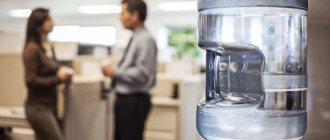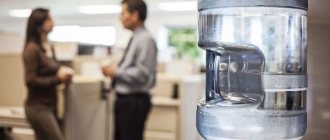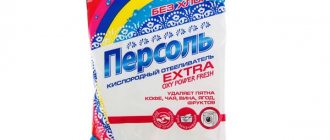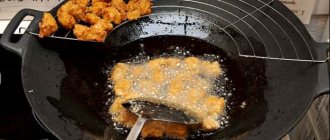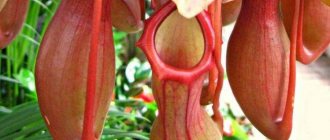This article will discuss methods that will help determine water hardness.
Water is the basis of all life on the planet; with its help, all processes take place around and within us. It has many parameters and characteristics that determine its quality, the most important of which is rigidity. The hardness of water can be determined by the concentration of salts in its composition. Depending on this, all water is divided into soft, medium and hard. Super-hard water is also found in nature, but it is impossible to drink such water.
How to determine water hardness: a little theory
Any experiments at home or in the laboratory, in this case, to determine water hardness, must be carried out in accordance with established standards and in certain units of measurement.
- Hardness salts are calcium and magnesium crystals. It is their concentration that determines the hardness.
- The unit of measurement adopted by the World Organization is mol/m³. But it is not very convenient in calculations, so there is still no single measuring indicator. Therefore, it is worth considering the ratios for translation. After all, each test or device has different characteristics depending on the manufacturer.
The Russian GOST 31865-12 system has approved a fixed indicator - degree of hardness (°Zh), which is equivalent to the value of milligram equivalent per liter (mg-eq/l). 1°F = 1 mEq/l = 20.04 mg Ca2+ and 12.16 Mg2+.
Hardness levels:
- Up to 2° is soft water
- From 2 to 10° - average
- From 10 to 12° - hard water
- Over 12° - super hard
But practice shows that already at the limit of 4-5° scale, plaque and other deposits appear not only on the surface, but inside our body!
Translation in ppm
Alternative verification methods
Unfortunately, it is not always possible to deliver water to the laboratory in the required time: remoteness, traffic jams, personal busyness.
Simple tests to determine water hardness at home:
- Brewing loose leaf tea. If the infused drink becomes cloudy, viscous and covered with a film, this indicates a high content of calcium and magnesium. A metallic taste also indicates low quality.
- Soaping hands. If foam forms instantly, then the water is quite soft; if not, there is a high salt content. It is better to check with laundry soap. Foam will appear when the soap binds excess calcium and magnesium salts.
- If the dishes are difficult to wash and the clothes are not washed, this is a signal that it is time to soften the water.
- The transparency of water is a clear sign of its quality. If the text on a newspaper is easy to read through a glass filled with water, then we can talk about normal hardness.
- Drop water onto clear glass and wait for the drop to evaporate. If there is a trace left, the water is hard.
- Another test: dissolve potassium permanganate crystals and see if it has acquired a yellowish tint. With normal hardness this will not happen.
Taste test: Pour water into a clean container and boil for 5 minutes. Cool to 25 degrees. Try the water: if there is a bitter taste, it contains an excess of magnesium salts; a tart taste is a sign of high iron content. The gypsum component in water is defined as a sweetish taste.
We recommend: How to properly iron clothes and bed linen: we make the process easier
Simple foam test:
- Prepare three samples: two bottles of store-bought water with different hardnesses and one from the tap.
- Pour an equal amount of soap shavings into the container and shake.
- Measure the height of the foam with a ruler and compare the samples. If tap water produces less foam than bottled water, then it is of lower quality.
Those who need a more accurate result, but who have no intention of going to the laboratory, should pay attention to the TDS-3 water hardness measuring device. The device requires skill to operate, but the instructions make it quite easy to understand the principle of its operation.
How to determine water hardness: test
For domestic needs, a superficial assessment is sufficient to determine water hardness.
- Stores sell special test strips that can also be used if necessary. Although they do not give an accurate assessment and show the hardness approximately, they are accessible and simple. You can buy them at branded household or pet stores.
- When lowered into water, the color of the strip will gradually change depending on the salt concentration in the water. Next, it’s worth comparing the results using the table that manufacturers often indicate on the packaging.
The permissible error is about 1-2°F.
Algori src=»https://heaclub.ru/tim/ea70548957dba813fe3cf8b9a79a1921/primer-raznoobraziya-polos.jpg» class=»aligncenter» width=»720″ height=»694″[/img] An example of the variety of stripes
Try test strips
What you will need
- Test strips for determining water hardness. They can be purchased at pet stores and home appliance stores. An alternative is strips for determining the acid-base level (pH) of a liquid.
- Cup.
What to do
Pour the water you want to measure the hardness into a glass. Dip a paper indicator strip with reagent squares applied to it into the liquid.
Shots: @Prosto Sidorov / YouTube
Pull out the strip and wait about a minute (the exact duration is indicated in the instructions). Under the influence of mineral salts, a chemical reaction begins, and the color on the dough indicator squares will change.
Shot: @Prosto Sidorov / YouTube
To determine water hardness, compare the color in the indicator windows with the sample in the instructions.
If you use pH strips, remember the general rule: the harder the water, the more alkaline it is - that is, the higher the pH value. As a rule, soft water has a pH less than 7, hard water has a pH above pH Levels in Drinking Water / ATS Environmental 8.5.
How to determine water hardness using a home appliance?
- You can determine the hardness of water using a special device that measures the electrical conductivity of the liquid - a TDS meter. At the same time, you can find out not only hardness, but also the presence of other impurities, electrical conductivity and even temperature (depending on the company). The main thing is good calibration, preferably at 2-3 points. The color of the indicator also changes depending on the amount of salt. In addition, the salt level directly affects the electrical conductivity of the liquid.
Important: Filter systems based on ion exchange resin simply replace harmful calcium ions with sodium ions, so home experiments can show good results. TDS devices do not take into account the replacement of ions, because the total mineralization of water does not change. Therefore, there will be discrepancies in the indicators!
Definition
Types of softening devices
There are several main groups of specialized devices. Some are able to soften the drink, which is used for cooking and drinking. Others provide household appliances with a purified solution and allow you to wash in clean water.
The choice of device depends on the financial capabilities and goals of the buyer. In most cases, the following types of devices are purchased:
- filters in the form of a jug;
- built-in equipment with several degrees of purification;
- electromagnetic converters.
Let's consider the advantages and disadvantages of each of the presented types of devices.
Filter jug
This mitigation option is often chosen by apartment residents. The device is a jug with a compartment into which the solution is poured. It comes through a special cartridge containing carbon. The substance retains large particles, and the purified drink enters the lower compartment of the jug. Cartridges are selected depending on the purpose. Special filters for softening are also available.
The advantage of the device is its low cost and maneuverability. The jug takes up little space and is convenient to take outdoors. The disadvantages include the need to frequently replace components. Depending on the number of people living in the house, the cartridge will have to be changed every 1 to 2 months.
In addition, this filtration method is not considered the most effective. The largest suspended matter is retained, but the salt concentration decreases slightly. If there is a strong excess of aggressive substances, it is necessary to consider other cleaning methods.
Reagent-free devices
The following types of devices are embedded equipment. Devices can be embedded under the sink or directly into the water supply system so that it flows not only into the kitchen, but also into the bathroom.
Please note that devices take up a lot of space. The impressive dimensions of the filters must be taken into account when planning the installation. Most often, the equipment is mounted under the sink. Depending on the chosen type, filtration systems can be multi-stage. Some devices capture only large particles, while others remove even the smallest components. There is a function of ultraviolet radiation to destroy pathogenic microorganisms.
Choose a device that softens the water. Filters of this type perform their functions well, but will cost much more. But they do not require such frequent cartridge changes as jugs. Typically, components are replaced every six months to a year (depending on consumption).
Electromagnetic devices
The latter type of equipment is a filter that processes liquid using electromagnetic radiation. It connects to the electrical network and usually does not require tapping.
The emitters are magnets, so replacement of components is not required. The devices can last up to 20–30 years without failure. The use of electromagnetic waves against increased rigidity is effective. Although the devices are expensive, they quickly pay for themselves and do not require cartridge replacement. Therefore, experts recommend installing this type of equipment in homes where the content of calcium salts significantly exceeds the norm.
Increased water hardness is a problem that residents of megacities often face. An excess of substances threatens a person with serious illnesses, and also disables household appliances and contaminates dishes. Stiffness can be dealt with using home methods, or you can opt for specialized equipment. Filtering devices do a better job of cleaning tap water.
How to determine water hardness by titration?
This can most accurately be done in laboratory conditions . Any sanitary and epidemiological station will help you not only determine water hardness, but also other indicators. Although you can conduct similar experiments at home.
- To do this, we buy the required reagent (for aquariums), take the specified amount of water and add drop by drop, stirring the liquid in a circular motion.
- As a result, you get a transition from red (light pink) to green. But this number of drops will help determine the hardness.
Instructions, result
How to determine water hardness using laundry soap?
There is another fascinating experiment that you can do at home to determine the hardness of your water. It gives an error of up to 1-2°F.
- Take 72% laundry soap. 60% is acceptable. We measure exactly 1 g - this is approximately 1/3 tsp.
- Pour a little distilled water (literally 10-12 ml) into a glass with a neck 6 cm wide - this is about 2 cm from the bottom. The experience is not very accurate, so errors are allowed, and a small discrepancy in millimeters is not scary. But for your own convenience, glue a paper ruler to the outside from the beginning of the inner bottom of the glass. Advice: Check the water for this experiment. The purchased liquid does not always meet the requirements. Although minor, deviations from the norm are possible. But in this case, experience will give a large error.
| Degrees dH | Character of water | Hardness in mEq/l |
| 0–4° | Very soft | up to 1.5 mEq/l |
| 5–8° | Soft | 1.5–4 mEq/L |
| 9–12° | Medium hardness | 4–8 mEq/L |
| 13–22° | Tough | 8–12 mEq/L |
| 23–34° | Very tough | above 12 mEq/l |
Comparison of results
How to determine water hardness at home using improvised means?
- A simpler way to determine water hardness is to use regular soap. This indicator is very approximate, but it quickly shows that if an item does not lather well in a soap solution, and when washed off it becomes covered with a flaky coating, then the water is hard! And the softer the water, the better the foam.
- Also, a good test for water hardness is large-leaf tea (namely leaf, not granulated), which, when brewed in hard water, turns out cloudy, dark in color and has an unpleasant aftertaste - due to the influence of a large amount of salts in the water. In addition, foam on the surface of the tea is also a signal of hardness. It usually appears after a few hours.
- Scale on a kettle, washing machine, pipes and taps - hard water will constantly and very quickly create a deposit that will corrode the enamel.
- You can drop a drop of water on the glass or mirror. The presence of any white or yellow coating will indicate increased hardness.
- The abundance of salts prevents potato and meat dishes from overcooking.
- And as a final piece of simple advice, taste the water. Boil the water, preferably for about 5 minutes. After cooling, try: Sweet taste - lots of gypsum
- Gorky – magnesium crystals
- And tart means an abundance of iron
The simplest definition
Use a mirror
This method will allow you to guess how hard the water is flowing from the tap. But it will not give a specific meaning.
What you will need
- Mirror.
- Pipette.
- Distilled or boiled water.
What to do
Using a pipette, apply a drop of tap and distilled water to a horizontal mirror surface. Wait for the liquid to evaporate. And then analyze the two spots with sediment remaining on the glass.
The more saturated the sediment from tap water is, the more it differs from the almost imperceptible trace of distilled water, the higher the hardness.
Why is it sometimes necessary to determine water hardness?
Water is extracted from the depths of our earth, where it is in constant contact with the soil, various rocks, minerals and substances. They leave all kinds of impurities in the water that affect its composition, physical and chemical properties. Despite the absence of color and odor, water contains all kinds of salts, minerals, alkalis and acids.
This composition affects the hardness of water and, accordingly, its physical properties that we notice in everyday life. And, unfortunately, even the best systems cannot completely purify the water or may fail, so this process must be controlled. In addition, you yourself can determine the hardness of the water at some intervals, at least at home.
Measuring instruments
Today, there are two main ways to accurately determine salt content. In pharmacies or specialized stores, express tests and salinity meters are sold for those who keep an aquarium. The devices accurately determine the composition of the solution, highlighting the content of salts and other substances.
The disadvantage of using equipment is that it will not be cheap. However, everything pays off with the accuracy of measurements and the ability to carry out analysis yourself, without resorting to the services of quality laboratories.
Advantages and disadvantages of soft water
Soft water has its advantages and disadvantages. The benefits of soft water include:
- preventing the development of urolithiasis;
- the best taste of food and drinks prepared with this water;
- beneficial effect on skin and hair when swimming in this water;
- increasing the service life of heating elements and various household appliances operating on this water, the absence of scale.
The disadvantages of soft water, if used constantly, include:
- insufficient replenishment of the body with minerals;
- the likelihood of developing caries;
- the likelihood of developing hypertension and heart disease;
- the likelihood of developing diseases of the gastrointestinal tract;
- poor washability when washing dishes and laundry.
Simple tips
Advantages and disadvantages of hard water
Despite the fact that soft water is traditionally considered to be of higher quality and beneficial for our body, hard water also has its advantages, the main of which is the prevention of the development of hypertension and diseases of the cardiovascular system. But it has much more disadvantages. These include:
- formation of stones in the kidneys and liver;
- salt deposition in joints;
- the occurrence of caries;
- reduction in the service life of various household appliances operating on this water, the formation of scale and deposits in water pipes;
- Hard water tastes slightly bitter.
What is the difference between hard water and soft water, which one to choose?
From the characteristics of soft and hard water we can conclude the main differences, but there are also physical and chemical differences.
- Color, transparency and odor depend on the variety of salts and minerals in the water. Therefore, by the yellowish color, if you place a glass of water on a white sheet of paper, you can also determine the hardness of the water. When boiling, the salts precipitate and the color becomes equal. Distilled water is colorless, tasteless and odorless and is pure H2O
It is important to say that it is not advisable to consume either water constantly. Our body is tuned to natural balance, so alternating one and the other water is ideal for it. Although average water values are still considered the most optimal.
What salts cause the hardness of natural water, and where do they come from?
The main hardness salts present in water are different compounds:
- nitrates, chlorides, magnesium carbonates;
- bicarbonates, sulfates, calcium sulfides.
After natural evaporation or after forced evaporation of an aqueous solution, the salts become visible and remain in the vessel. They are the ones who form deposits on the bottom and walls of dishes, teapots, and sanitary equipment. Based on the hardness of the water, it is easy to determine which salt is most clearly present in it. Magnesium impurities are more difficult to dissolve and give drinks a bitter taste.
What determines the presence of hardness salt in water?
The degree of hardness for drinking water is determined by the type and amount of aqueous salts. The indicators are different in different areas. Salts penetrate into aquifers, being washed out of rock deposits: limestone, gypsum, dolomite.
Water hardness indicators are variable values, they depend on various factors:
- processes occurring in the earth's crust;
- layers of fossil deposits through which water flows pass;
- intensity of dissolution of sandy rocks;
- changing seasons.
Waters lying close to the surface and those lying at depth have different parameters. They are higher where the water flow passes through layers of limestone. In the spring, with an abundance of melt flows, when they enter water bodies and seep into underground water layers, the amount of salts decreases. In winter the concentration is higher.



